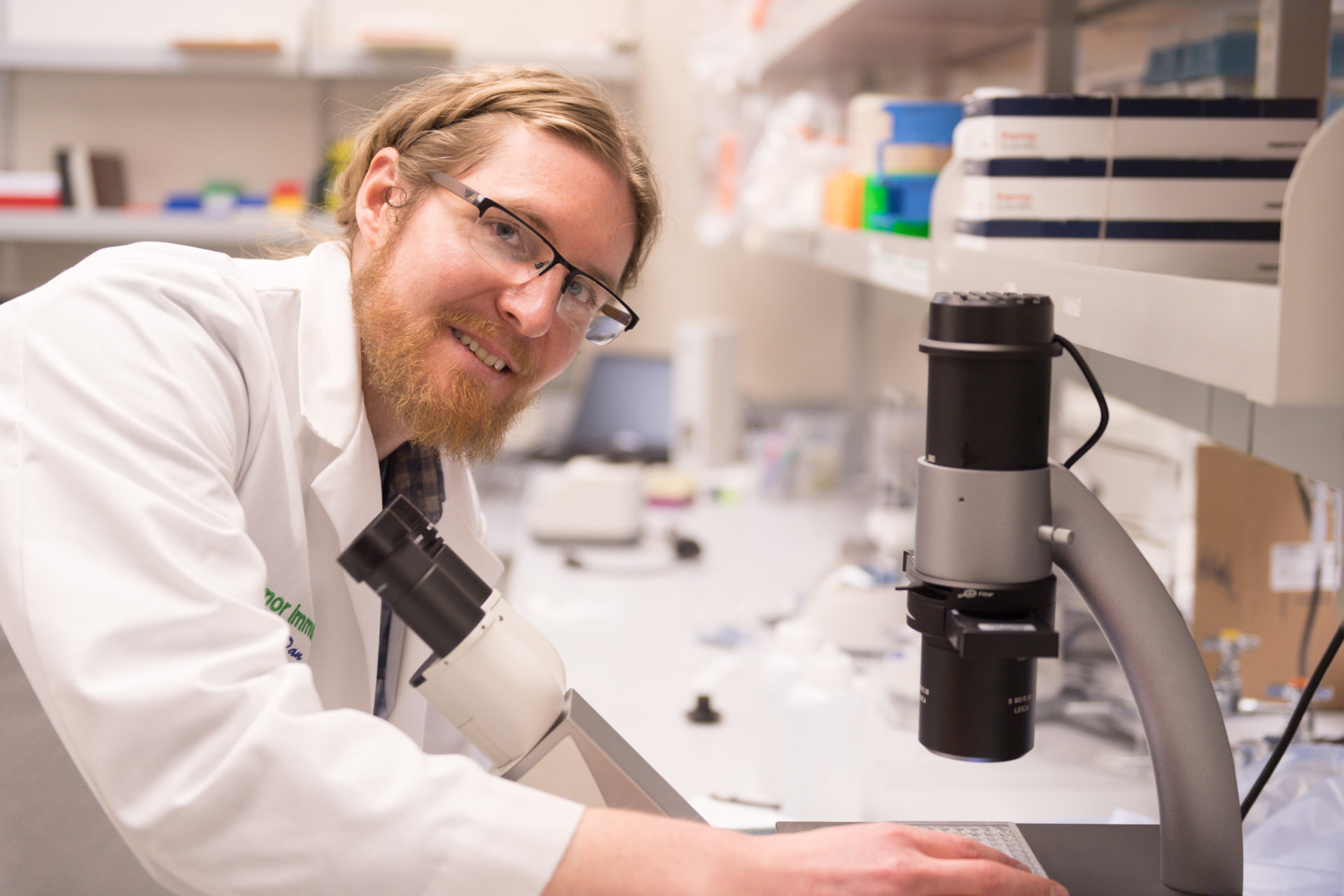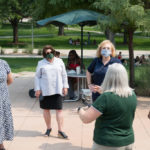
As of January 2019, there were more than 3.1 million women with a history of breast cancer living in the United States. This includes women who are currently being treated and women who have already finished treatment.
In 2017, an estimated 3,840 women in Colorado will be diagnosed with new, invasive breast cancer, according to the Susan G. Komen Colorado. That is nearly 11 women diagnosed with breast cancer per day.
“On average, an individual woman has a 1-in-8 chance of developing breast cancer over an 80-year lifespan,” said Cherie Worford, staff physician at the women’s and gender care department at Colorado State University Health Network.
For women in the U.S., breast cancer death rates second only to lung cancer, and it is the most frequent cause of cancer death in women worldwide, according to Amy Wing, advance oncology nurse practitioner at the UCHealth Cancer Center in Fort Collins.
Research
Dan Regan, assistant professor in the CSU Department of Microbiology, Pathology and Immunology, is working with a team to find a way to stop breast cancer tumor cells, from rejecting treatment.
In a healthy body, stroma cells exist to perform functions like organ structural support. Cancer cells also have stroma cells serving as a support system. However, these cells have one function — to spread.
“[The cells] intrinsically promote cancer progression and metastasis and can promote resistance to anti-cancer drugs,” Regan said. “So, [the research is] focused more on those cells and how they’re modulating drug resistance for breast cancer.”
The resistance to chemotherapy drugs is caused by intrinsic tumor cell autonomous mechanisms. Imagine a child not wanting to eat vegetables. They push the spoon away and reject the food. In the same way, cells do not want to accept the chemotherapy, so they pump the treatment back out. This process is made possible through active drug efflux pumps.
“We want to look at extrinsic factors, what are the cells of your body that perform all these supporting functions, how are they extrinsically also promoting this drug resistance,” Regan said.
Regan is researching lung fibroblasts specifically. Fibroblasts are the most common cells of connective tissue in animals.
But why study the lungs when the research is focused around breast cancer? The lungs are one of the top three common metastatic sites for breast cancer. Once the cancer has spread from the breast to the lung, the effectiveness of treatment drastically lowers.
Research is being conducted to determine what is it about the normal cells of the lung that seem to promote the preferential spread and growth to that specific area, Regan said.
“If we figure out some mechanism [determining] how the cells of your lungs, these fibroblasts, are extrinsically promoting drug resistance in breast cancer,” said Regan, “then maybe we can target that and have better treatments for these patients once they’ve reached this level of spread.”
Preventative measures
There are many factors involved in developing cancer, but it is important to be aware of the risk factors, whether those are things are in the control or out of the control of the individual.
“Being aware of some of these risk factors,” said Regan, “both things that you can change yourself but especially the ones you can’t change, the inheritable conditions, the family history and if you’re aware, maybe you’re screening earlier and that leads to earlier detection and typically a better outcome.”
Within people’s control are healthy eating, exercising, using sunscreen, staying away from tobacco, among other habits. Genetics, however, would be outside of the individual’s control. If they are genetically dispositioned to develop cancer, early testing would be the best option so that treatment or surgery can happen before the cancer spreads.
Mammograms are one way to catch cancer early. These are x-rays of the breast help identify abnormal masses or microcalcifications that could be cancerous.
“Studies show that screening mammography can help reduce the number of deaths from breast cancer among women ages 40 to 74, especially for those over age 50,” Worford said.
According to Wing, the women who are at higher risk for developing breast cancer include women who have had a prior history of breast cancer, familial history, women with a history of chest irradiation between the ages of 10 and 30 and women with a family member with a known genetic risk factor such as a mutation in a high risk gene like BRCA 1 or 2.
Treatment
Treatment for cancer is often thought of as chemotherapy. However, Wing explains that it all depends on the stage and pathology of disease.
“Surgery, radiation therapy, biologic and targeted therapy and endocrine (anti-hormone) therapy are all other modalities used to treat breast cancer,” Wing said.
Individuals who are diagnosed with breast cancer should explore a specific care plan with a breast cancer specialist to discuss and choose the best possible management options for their specific diagnosis.



































































































